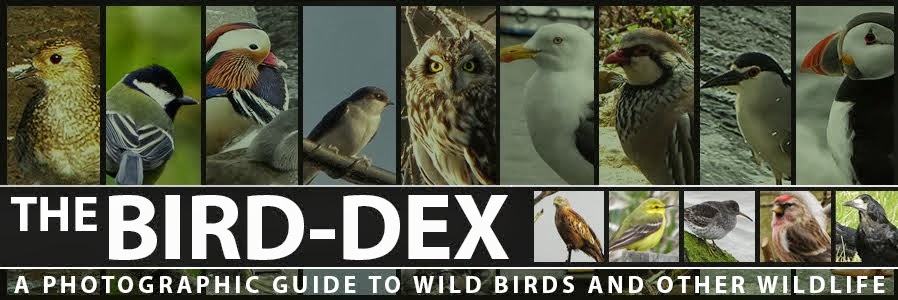Latin Etymology: Chrysolophus ("with golden crest") amherstiae (named for Sarah Countess Amherst)
Call of Adult Male Lady Amherst's Pheasant (Chrsyolophus amherstiae) at Lidlington, Bedfordshire - April 2015 (second call in recording)
Featured Subspecies: N/A
Weight: 675-850g / Length: 66-173cm / Wingspan: 70-85cm
The Lady Amherst's Pheasant is at this point probably the rarest bird in Britain, and though some would dismiss it as an introduced bird and thus not worthy of concern, for me the history and beauty of this species were enough to track down what is probably the last of its kind in the country. Named after the wife of a Governor of Bengal and introduced to Britain in around 1890, the population did reasonably well for itself peaking in the 70s and 80s at around 250 birds, but for various reasons (some I've seen credited include changing habitat, being killed by foxes and being killed by gamekeepers) the species declined, and now this bird is quite possibly the last of it's kind.
Even knowing where it was though, actually seeing the thing is not easy - despite it's vibrant colours it is a skulker in deep undergrowth. I tried on two separate days to get a photo, and although I heard it a lot (see the recording, rather than photo above) and caught a glimpse of it for fractionally too short a time to turn my camera on as it crossed the ride shown in the photo, but no photograph. Ultimately, though sitting on a path in a wood isn't exactly my ideal kind of birding, for a bird as beautiful as the Lady Amherst's Pheasant that will probably be soon lost to this country, I think it was probably worth it. I may make an attempt to photograph it again, but possibly only if it is still around by Winter.
Related Species:
Order: Galliformes
Family: Phasianinae
Genus: Chrysolophus
Subspecies: None - monotypic
- Sighting Locations -
UNITED KINGDOM - Previously established feral population, now believed extinct in UK
- The last bird seen and heard in 2015, and most recently, heard only in April 2016 at Lidlington. .
Further Notes: BirdForum Opus, IUCN Red List, RSPB, Wikipedia, Xeno-canto

No comments:
Post a Comment